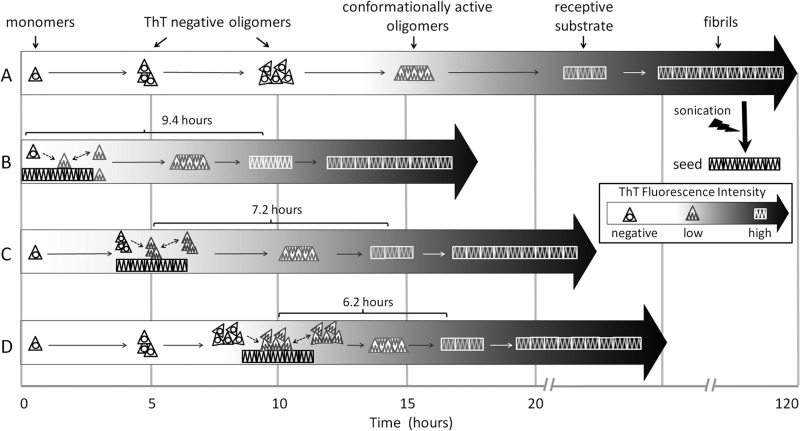FIGURE 9.
Proposed mechanism of PrPb fibril formation in unseeded and delayed seeding conditions. A, the unseeded reaction is shown, where monomers (dark triangles) first form ThT-negative (p-FTAA-positive) oligomers of increasing size and ultimately form conformationally active oligomers (light triangles, ThT-low, p-FTAA-positive) followed many hours later by receptive substrates (white squares, ThT-high), which go on to form fibrils. B, a typical seeded reaction is shown, with seed added at time 0. When monomers bind seed, they are immediately converted into a conformationally active state (ThT-low, p-FTAA-positive). As more monomers bind and are converted, a sufficient number or size is reached such that receptive substrates form. C and D, with delayed seeding, larger ThT-negative (p-FTAA-positive) oligomers are already present when seed is added, so immediate conversion of the larger oligomers occurs (becoming ThT-low, p-FTAA-positive), giving a greater linear increase in ThT fluorescence signal over time and allowing receptive substrates to form in a shorter time period after seed addition.

